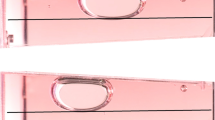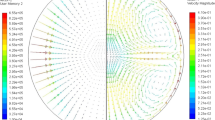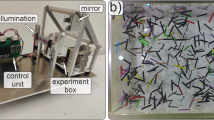Abstract
Commercial production of glasses for advanced applications often requires processing techniques substantially different from those in common use. In particular, containerless processing is desirable where melt temperatures are sufficiently high that the container wall reacts chemically with the melt and/or promotes crystallization. An ideal environment for containerless processing is provided by the NASA Space Shuttle program because in orbit, near free fall conditions prevail and little levitation is necessary. In such an environment, however, there are serious problems associated with convective mixing and buoyant fining (bubble removal) of glass melts. Alternate techniques for the promotion of mixing and for managing bubbles in space have been proposed by Subramanian and Cole and include thermocapillarity, rotation, oscillation, etc. This paper will describe these experiments and discuss two of a number of ongoing ground-based projects in support of the flight experiments.
Similar content being viewed by others
References
Brabston DC and Keller HB (1975) Viscous flows past spherical gas bubbles. J Fluid Mech 69: 179–189.
Greenspan HP (1968) The theory of rotating fluids. London: Cambridge.
Jefferey GB (1912) On a form of the solution of Laplace's equation suitable for problems relating to two spheres. Proc Roy Soc (London) A87: 109–120.
Nielson GF and Weinberg MC (1977) Outer space formation of a laser host glass. J Noncrystalline Solids 23: 43–58.
Nolen RL, Downs RL, Miller NJ, Ebner MA, Doletzky NE and Solomon DE (1977) Inertial Confinement Fusion. Washington: Optical Society of America.
Rosencwaig A, Dressler JL, Koo JC and Hendricks CD (1978) Laser fusion hollow glass microspheres by the liquid-droplet method. UCRL-81421.
Shankar N, Cole R and Subramanian RS (1981) Thermocapillary migration of a fluid droplet inside a drop in a space laboratory. Int J Multiphase Flow 7: 581–594.
Stimson M and Jefferey GB (1926) The motion of two spheres in a viscous fluid. Proc Roy Soc (London) A111: 110–116.
Subramanian RS and Cole R (1979) Experiment requirements and implementation plan (ERIP) for “Physical phenomena in containerless glass processing,” Experiment MPS 77F010, NASA Marshall Space Flight Center, Document 77FR010.
Weinberg MC (1978) Glass processing in space. Glass Industry, March: 22–27.
Woerner RL, Draper VC, Koo JC and Hendricks CD (1980) Conference on inertial confinement fusion, digest of technical papers. Washington. Optical Society of America, p 32.
Author information
Authors and Affiliations
Rights and permissions
About this article
Cite this article
Annamalai, P., Shankar, N., Cole, R. et al. Bubble migration inside a liquid drop in a space laboratory. Applied Scientific Research 38, 179–186 (1982). https://doi.org/10.1007/BF00385947
Issue Date:
DOI: https://doi.org/10.1007/BF00385947




